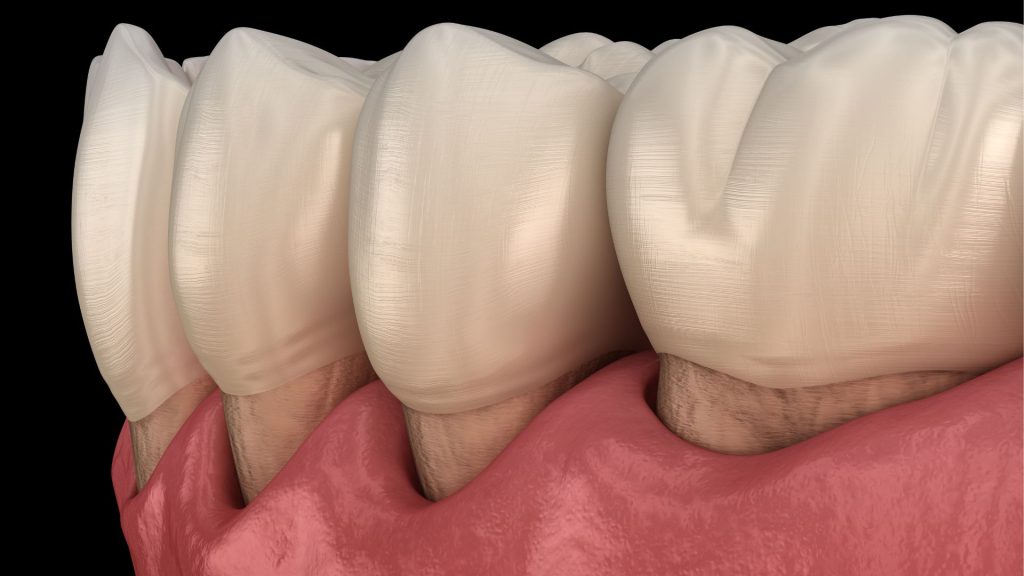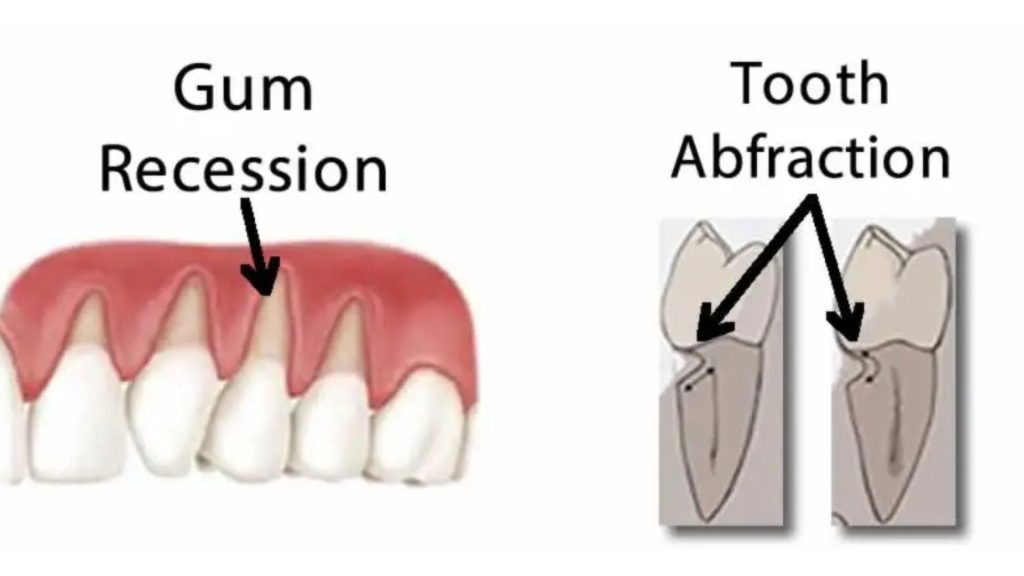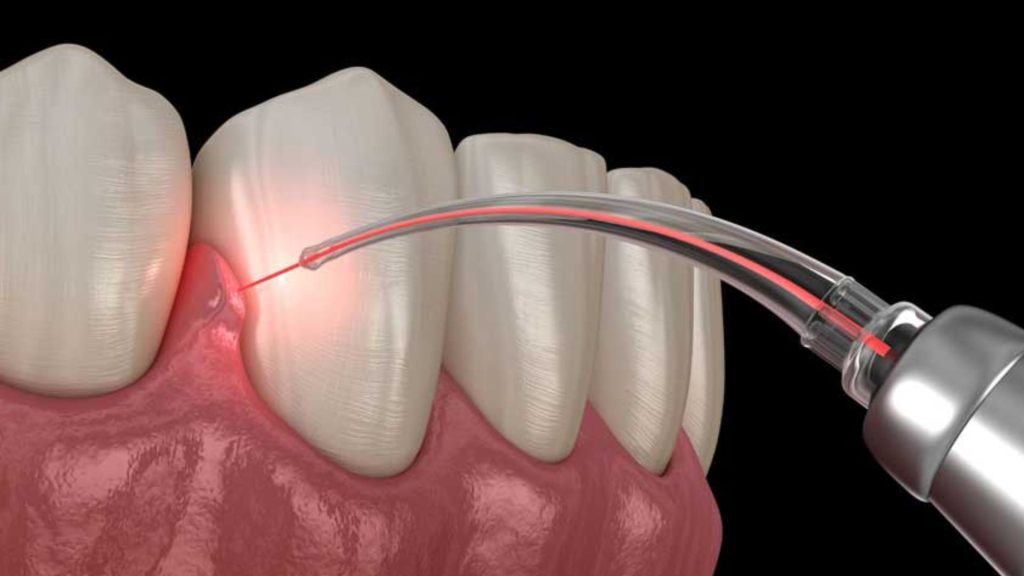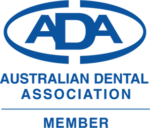Gum recession is a very common problem in the dental field, especially among adults. However, few people know that children can also suffer from gum recession. This problem is becoming more and more common and causing concern for parents.
So what is gum recession and what causes it? Let’s learn about this topic to protect your teeth and overall health.
Gum Recession – What Is It?


Gum recession occurs when the gum tissue recedes from the tooth, exposing the tooth surface. The tooth roots and underlying bone components may appear when the gum tissue recedes. This is frequently caused by periodontal disease or oral trauma. Gum recession may cause tooth loss and other oral health issues if not corrected.
What Causes Gum Recession?
The dentistry profession has identified gum recession as a major issue with potentially devastating effects on human oral health. Below, we’ll discuss the gum recession’s causes.
- Periodontal disease: This is the primary driver of receding gums. Periodontal disease causes the gum tissue to become inflamed and swollen, retreating over time.
- Oral Trauma: Accidents, impacts, and acute cuts cause gum wounds and tooth loss.
- Toothbrush gum recession: Too much brushing or a harsh brush may damage gum tissue and induce gum recession.
- Flossing and gum recession: Similar to brushing your teeth too hard. Also, you may cause gum recession by flossing too forcefully.
- Tobacco use: Chemicals in tobacco are corrosive to the gum tissue and contribute to gum recession.
- Aging: As gum tissue loses its ability to regenerate, age increases the risk of gum recession.
- Genetics: In some cases, gum recession can be hereditary.
- Improperly positioned teeth: Pressure from overlapping or misaligned teeth may cause gum recession.
- Diabetes: It can affect gum health and cause gum recession.
In sum, periodontal disease, damage to the mouth, aging, and heredity may all cause gum recession. By gaining insight into these factors, we may better implement preventative and curative strategies to safeguard our dental health.
Abfraction vs Gum Recession – How Different?


Dental diagnostics and therapy include abstraction and gum recession. However, many people still confuse these two concepts. Therefore, we will differentiate between abstraction and gum recession in the following section:
| Abfraction | Recession of Gum | |
| Define | Degeneration and loss of tooth structure result from this sort of dental wear mixed with mechanical stress at the tooth’s edge. | A condition in which gum tissue shrinks, leaving the roots of the teeth exposed, causing sensitivity and vulnerability |
| Reason | The mechanical strain on the teeth—leaning over, chewing hard foods—concentrated in the apical region close to the tooth. | Periodontal disease, oral trauma, brushing too hard, tobacco use, aging, genetics, misplaced teeth, diabetes. |
| Location | At the edge of the tooth. | In the gum tissue around the teeth. |
| Expression | Soreness, sensitivity, cracking, loss of tooth structure. | Teeth exposed roots, sensitivity, gingivitis, loss of tooth structure. |
| Treatment | Case-by-case treatment may involve dentures, braces, or reconstructive surgery. | Periodontal treatment, denture pads to reduce mechanical stress, fillings, polishing, and dental surgery to rebuild tooth structure and gum tissue are needed. |
In short, abstraction and gum recession are distinct dental issues. Abfraction is a sort of dental abrasion at the tooth’s apex that degenerates and loses tooth structure, while gum recession exposes the tooth roots and causes discomfort. delicate and weak. So, when we know the distinction between the 2, we can take better care of our teeth and gums.
How to Stop Gum Recession?
To keep your teeth healthy, you need to stop gum loss. Check out this piece from the American Dental Association to learn more about how to stop gum loss before it happens. Here are some ways to make it less likely that your gums will recede:
- Proper oral hygiene.
- Use fluoride toothpaste.
- Adjust eating habits: Limit candy, soda, and fast food. For oral health, consume plenty of green vegetables, fruits, seafood, yogurt, and legumes.
- Don’t smoke: In addition to damaging gum tissue, smoking may alter the balance of microorganisms in the mouth.
- Routine dental check-ups: Have a dental check-up at least twice a year to detect and treat dental problems early.
In conclusion, avoiding gum recession is vital to dental health. Regular dental care, correct brushing, fluoride toothpaste, cigarette and alcohol limitation, stress reduction, and a scientific diet may prevent and cure gum recession. However, early treatment of gum recession can protect teeth and reduce dental disease risk.
Gum Recession Treatment


To prevent more significant issues, gum recession should be addressed immediately. We covered at-home gum recession therapy in the preceding section. However, severe gum recession requires dental treatment. Dentists employ expert procedures to find the best answer for each instance.
- Root planning and scaling: This treatment removes plaque, algae, and deposits between teeth and gums, lowering gingivitis bacteria. If the sickness is severe, bleaching may be employed.
- Dental cosmetic surgery: Dental surgery repairs severe gum recession. Surgery involves skin grafts, gum sutures, and cancer cell transplantation.
- Gum recession surgery: To repair severe gum recession, gum surgery may extract soft tissue from other parts of the mouth.
- Extraction: If gum recession causes tooth loss, the dentist must remove and implant the tooth.
- Use a gum shield: A gum shield protects gums from brushing and chewing pressure.
- Pharmaceutical use: Supplement your body’s immune system with antibacterial, antiviral, and anti-gingivitis medications.
Overall, fixing gum recession early keeps it from getting worse and makes tooth problems less likely. The article addressed dental clinic gum recession treatments, from cleaning teeth to gum surgery. Patients must visit regularly and follow the dentist’s instructions to get the best results. Oral hygiene, diet, and dental habits can prevent and treat gum recession.
How to Prevent Gum Recession?
Maintaining healthy gums is essential for good dental and overall health. Therefore, knowing how to prevent receding gums is crucial. In this part, we’ll discover how to avoid gum recession and maintain gum health.
- Brushing twice a day and flossing to eliminate food particles will keep your teeth and gums healthy.
- Also, reduce sugar intake and artificial colorings in your diet.
- Moreover, you could switch to a softer toothbrush or ease up on the pressure while brushing your teeth if you find that it is causing discomfort.
- Adjust porcelain or dental implants to enhance tooth position and reduce mechanical wear.
- Regular dental checkups may discover and treat dental issues early.
- Gum recession is a result of gum tissue damage brought on by smoking and other drugs.
In conclusion, the preceding preventative steps will help maintain your teeth healthy and limit the chance of receding gums. To prevent significant consequences, address receding gums immediately.
Conclusion


In conclusion, gingivitis may cause various issues, but receding gums is the most significant. When gums recede, teeth become more sensitive and prone to infection; in extreme cases, tooth loss can occur. For this reason, taking measures to stop and cure the gum recession is crucial.
Spring Orchid Dentistry Clinic in Bassendean provides excellent preventative dentistry treatments to assist you in maintaining your oral health. Our expert dentists and contemporary technology provide the greatest dental experience. Moreover, to aid in the prevention and treatment of gum recession, we use cutting-edge methods.
Contact Spring Orchid Dental to book a consultation and learn more about our preventative dental treatments. We’re here to help you have beautiful, healthy teeth.
FAQs
Can Waterpik Cause Gum Recession?
Yes, it can. The Waterpik is a dental cleaning that utilizes high-pressure water to remove tartar and germs from the teeth and gums. Research shows that Waterpik may remove plaque and bacterial plaque from teeth and between teeth, preventing cavities and gingivitis.
However, improper or strong Waterpik use can damage gums and cause gum recession. Therefore, dental professionals should direct patients in how to use Waterpik correctly.
Gum Recession Surgery Cost Australia?
According to the Australian Government‘s website, mucous membrane lift surgery costs between AUD 1,400 and AUD 3,600 per tooth, while stem cell transplants for gum recession cost between AUD 3,000 and AUD 5,000 each tooth.
However, Australia’s gum recession surgery cost varies on numerous aspects, including severity, location, number of teeth impacted, therapy, and more.
In short, these are typical rates and may vary by case and venue. So, consult your doctor and dental clinics for gum recession treatment costs in Australia.
Can Children Get Recession of Gum?
Yes, kids can have gum recession. However, because children’s gums have not been damaged by pathogens, bacteria, smoking, alcohol, stress, toxic substances, etc., this rate is lower than in adults. To minimize gum recession and other issues, your child’s gingivitis should be treated immediately.
In sum, children’s teeth need special care to avoid future health issues. So, parents must clean their children’s teeth, take them to the dentist, and restrict their sugar and tooth-damaging food consumption.





